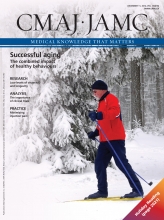I agree with Drs. Flegel and Fletcher that we must speak up now regarding assisted suicide and euthanasia.1
On July 15, 2012, in the Carter decision, a provincial judge rejected the Supreme Court’s Rodriguez precedent and purported to legalize assisted suicide and euthanasia throughout Canada.2 I am not a lawyer, but a plain reading of the decision reveals questionable assumptions and a lack of understanding of the needs of patients.
The linchpin of the decision is that suicide is not illegal in Canada and is therefore a right.2 But Canadian laws strive to prevent suicide and even authorize forcible treatment for those who are suicidal. The judge in the Carter case admits that “suicide and attempts at suicide are serious public health problems that governments are trying to address.”2 Thus, the idea that suicide is a right that society must assist with, as long as it is not a crime, is confused.
The judge then declares that the law prohibiting assisted suicide discriminates against people who are too disabled to kill themselves. She also speculates that the law might prompt the plaintiff to commit suicide sooner, while able, which would shorten her life.2
This Orwellian reasoning, presuming a right to die based on the right to (unshortened) life, ignores the fact that anyone, including the plaintiff, who commits suicide will suffer from a shortened life. How many years of life would Canadians lose if a legal assisted suicide risk lurked constantly in home and hospital?
A friend of mine recently died from a brain tumour. He said that when he first received the diagnosis he might have opted for assisted suicide, had it been available. Two years later, he was an activist against legalization. In the last article he wrote, he states “[Canada’s] laws exist to protect me and people like me from abuse when we are at our lowest and most vulnerable.”3
As a family doctor, I see elder abuse. Sadly, a desire for money or an inheritance is often involved. Worse, the victims protect the predators. An older woman knew that her son was robbing her blind and lied to protect him. Why? Perhaps family loyalty, shame or fear that confronting the abuser would cost love and care.
Predators take their victims to the bank and to the lawyer for a new will. With legal assisted suicide, the next stop could be the doctor’s office for a lethal prescription. How are we going to detect victimization? A troubling survey,4 one of several which uncovers nonconsented euthanasia deaths in foreign jurisdictions, failed to alarm the judge in Carter v. Canada.2











